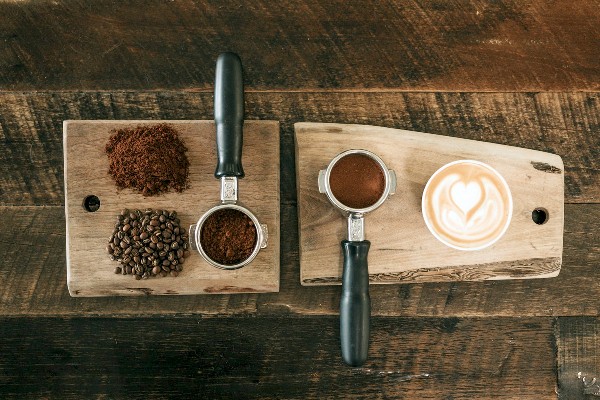There are so many different things people don’t know about. For instance, it might come as a surprise that exercise can boost your immune system. If you’re a coffee-lover, how much do you know about this drink? Here’s 6 things you may not have known about coffee.
1. There Are Many Websites Devoted To It
Coffee is so popular that there are many blogs and specialist websites based on it. They discuss all things related to the drink, from its history to the different flavor profiles. You can find everything from news and reviews to tutorials on how to make the perfect cup at home. If you want to geek out about coffee, the internet is a great place to start. YouTube has plenty of channels dedicated to the topic as well. Some of them are run by professionals and baristas, while others are amateurs who post their own attempts at latte art or special brewing methods.
If you have any questions about coffee, you’ll discover the answers online. You can learn about making the best-tasting espresso or view reviews of the top 6 picks, alongside photos and product descriptions. It’s also possible to find out what are the smoothest Espresso coffee beans, how to choose a good blend, and what country grows them.
Photo source: Unsplash
2. It Brings Health Benefits
Coffee also has a number of health benefits that make it an attractive choice for those wishing to get and stay well. If you’re feeling run down, coffee can help boost your energy levels. This is because caffeine is a stimulant that helps increase alertness and reduces fatigue. In fact, research shows that consuming caffeine can improve your physical performance.
Drinking coffee may help lower your risk of various health problems, including heart disease and Type 2 Diabetes. This is because coffee contains polyphenols, which are natural antioxidants that can protect against inflammation in the body. You can use coffee as part of your regime for maintaining a healthy weight. Drinking coffee can help reduce your risk of developing skin cancer and Alzheimer’s disease. It may also be that coffee has protective effects on the liver.
3. It’s Good For Your Mind
If you’re feeling down or anxious, drinking a cup of coffee may help improve your mood. In fact, studies show that caffeine can boost levels of dopamine in the brain by up to 30 percent, which is why it makes you feel so good. It also releases adrenaline into the bloodstream when consumed at higher doses, which can produce feelings of excitement or euphoria.
The caffeine in coffee increases alertness and reduces fatigue, which can help you focus on your work. It improves concentration and enhances cognitive function. It’s been proven that coffee can improve your memory and mental clarity. So if you’re struggling to concentrate at work, drinking a cup or two might help you get things done.
4. It’s Grown All Over The World
The coffee bean is actually the seed of a fruit that grows on a tree. After it’s been picked, the seeds are dried and roasted to make coffee. You can find coffee being grown everywhere, from Africa to South America to Asia. Some of the most well-known coffee-producing countries include Brazil, Colombia, Indonesia, Ethiopia, and Tanzania. There are different types of coffee beans depending on the region where they’re grown, so trying coffees from different parts of the world is a fun way to explore the flavor variations.
The plants that produce coffee beans grow into shrubs that can be up to 20 feet in height when fully mature. They don’t need much space, so they’re popular for small gardens and patio areas as well as larger plantations where many plants are grown together for commercial production.
5. There Are Several Different Coffee Beans
The two main species are Coffee Arabica and Coffea Canephora (Robusta). Arabica has been cultivated for hundreds of years, both wild and domesticated. It makes up about 60-70% of the coffee we drink today. Robusta comes from a different genus, but is still a member of the same family. Its flavor profile tends toward earthy tones with less sweetness than Arabica – think earthier chocolate or cocoa powder versus milk chocolate (or even dark). The variation is also reflected in the price: Arabica coffee beans are more expensive to buy.
Arabica coffee beans taste sweeter with more prominent fruit flavors and acidity, whereas Robustas have stronger bitterness (or astringency) due to their higher caffeine content. Whilst Arabica is less acidic and makes better-tasting coffee, it doesn’t produce as much dopamine in your brain compared with Robusta. Another coffee bean is Liberica which is mostly found in Africa and parts of Asia. The beans are large with a reddish color and have a fruity, wine-like flavor.
Photo source: Unsplash
6. There Are Many Different Coffee Drinks
Here are some interesting examples:
- Americano is coffee with hot water.
- Breve is an Americano made with steamed half and half (or light cream) instead of milk.
- Cortado is coffee with a little bit of warm milk.
- Cafe au lait is coffee and steamed milk.
- Cappuccino is coffee with lots of foamed milk and some foam on top.
- Flat White is an espresso and steamed milk.
- Latte is coffee with lots of frothed milk.
- Latte Macchiato has layers of frothed milk at the bottom with an espresso shot added on top
- Mocha is a chocolate latte.
- Turkish coffee is thick and strong
- Espresso con Panna, or “espresso with cream,” is an espresso topped off with whipped cream
- Affogato al caffè (which means to drown in the cafe), is made by pouring a shot of hot espresso over vanilla ice cream and topping it off with chocolate syrup.
The list goes on…
No doubt, you’ve now learned a few things you didn’t know about coffee. It’s worth reading up on this fascinating subject, so you can fully appreciate every aspect of it, whether it’s the history or the different kinds of coffee roasts. One thing’s for sure: coffee will continue to be enjoyed worldwide for many years to come.










